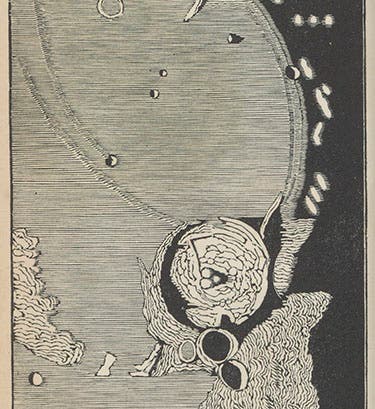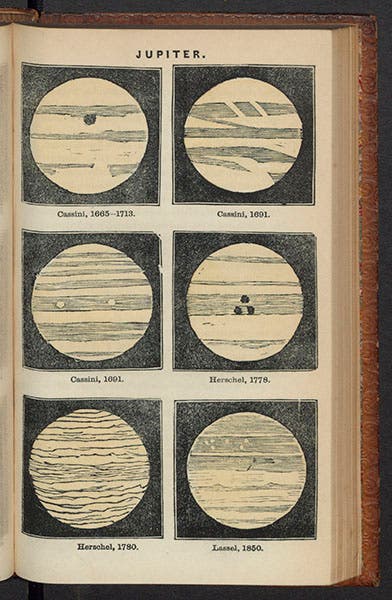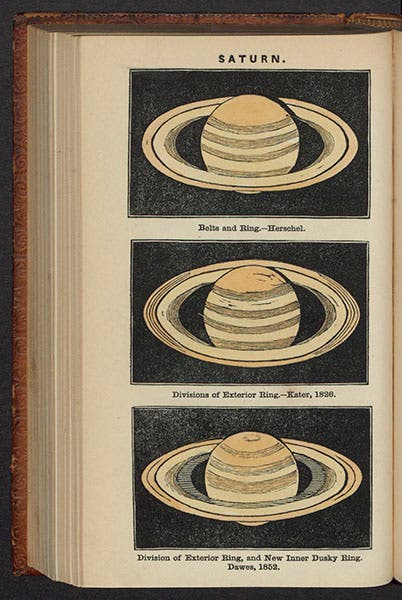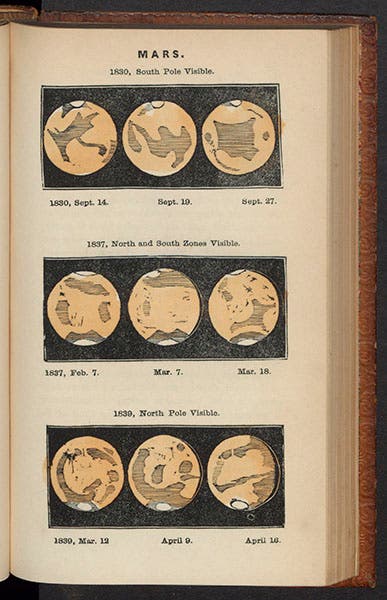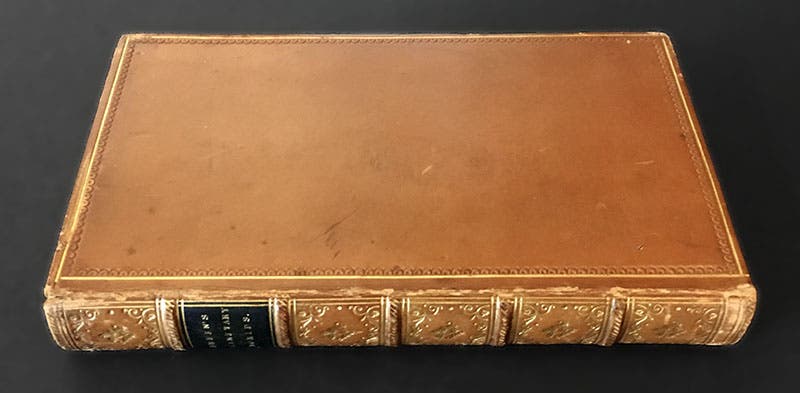Scientist of the Day - James Breen
James Breen, an Irish astronomer and popular writer, was born July 5, 1826. One of the most striking features of science in Victorian England was the proliferation of popular books on science, especially astronomy. Authors such as Thomas Dick and John Nichol churned out volume after volume on the solar system and the stars that were eagerly snapped up by a responsive public. The illustrations in these mass-produced publications varied greatly in quality and reliability.
One of the best popular astronomy books was written by Breen: The Planetary Worlds: The Topography and Telescopic Appearances of the Sun, Planets, Moon, and Comets. Published in 1854, it had chapters on all of the objects that could be seen in a small telescope, as the sub-title indicates. Each chapter had one or more woodcuts that illustrated the object being discussed, and the cuts were often hand-colored, which added greatly to their attractiveness. We see here two lunar views: the frontispiece (first image), which shows Mare Humorum and several craters, including Gassendi; and another woodcut that depicts the lunar Apennines and Eratosthenes crater at the top; and two views of the craters Eudoxus and Aristotle, at the bottom (third image).
Breen's views of Jupiter (second image) were drawn from older sources – three were made by the 17th-century observer Cassini – although the last one had been recorded only four years earlier, by William Lassell, our Scientist of the Day just two weeks ago.
But all three views of Saturn (fourth image) were 19th-century observations, by such as John Herschel, and the bottom one shows the newly discovered inner crepe ring, first noticed in 1850 by several observers.
The first good drawings of Mars were published in 1840 by Willem Beer and Johann Mädler, after they had completed their spectacular lunar map of 1834. They (mostly Mädler) observed Mars during favorable oppositions of 1830, 1837, and 1839 and published 50 of their drawings on three lithographed plates. Breen selected his Mars drawings from those of Beer and Mädler, adding color to make them more attractive to the general reader.
We reproduce not only Breen's 9 drawings of Mars (fifth image), but a detail of one of the lithographs from Beer and Mädler that Breen drew on for his own illustrations (sixth image), so that you may compare them. Breen was the first in England to reproduce any of Beer and Mädler's Mars drawings. But you will notice that his copies were not especially faithful, and most of the fine detail of Mädler’s delicate lithographs was lost.
Breen might have moved on to write books about stars and nebulae, as did most of his popular astronomy colleagues, but he was struck down by the scourge of the 19th century, consumption (tuberculosis), and he died in 1866, only 40 years old. His grave location is unknown, so we offer instead, as a memorial, the cover of his Planetary Worlds (seventh image). Our copy has a prize binding, meaning it was given to some especially worthy student for accomplishments unknown. Who knows, perhaps it launched a notable career in astronomy. Dr. William B. Ashworth, Jr., Consultant for the History of Science, Linda Hall Library and Associate Professor, Department of History, University of Missouri-Kansas City. Comments or corrections are welcome; please direct to ashworthw@umkc.edu.

